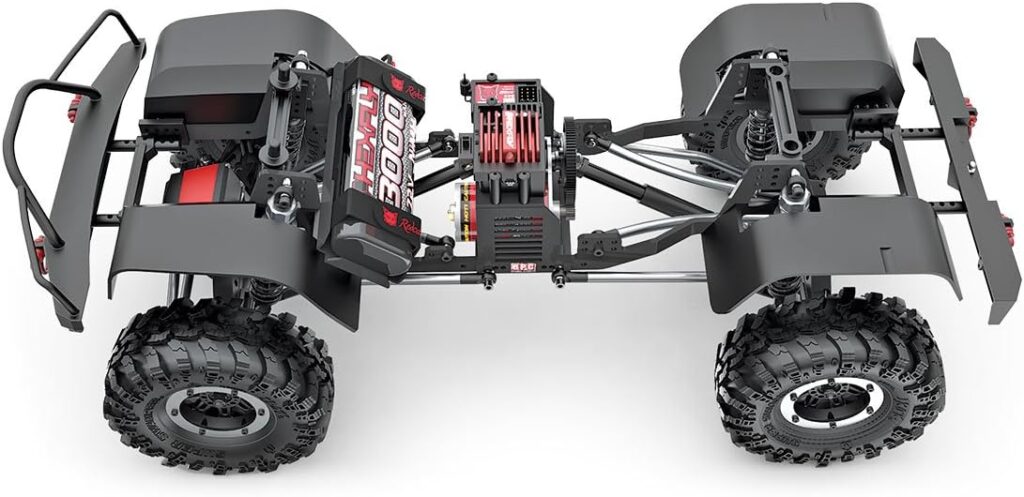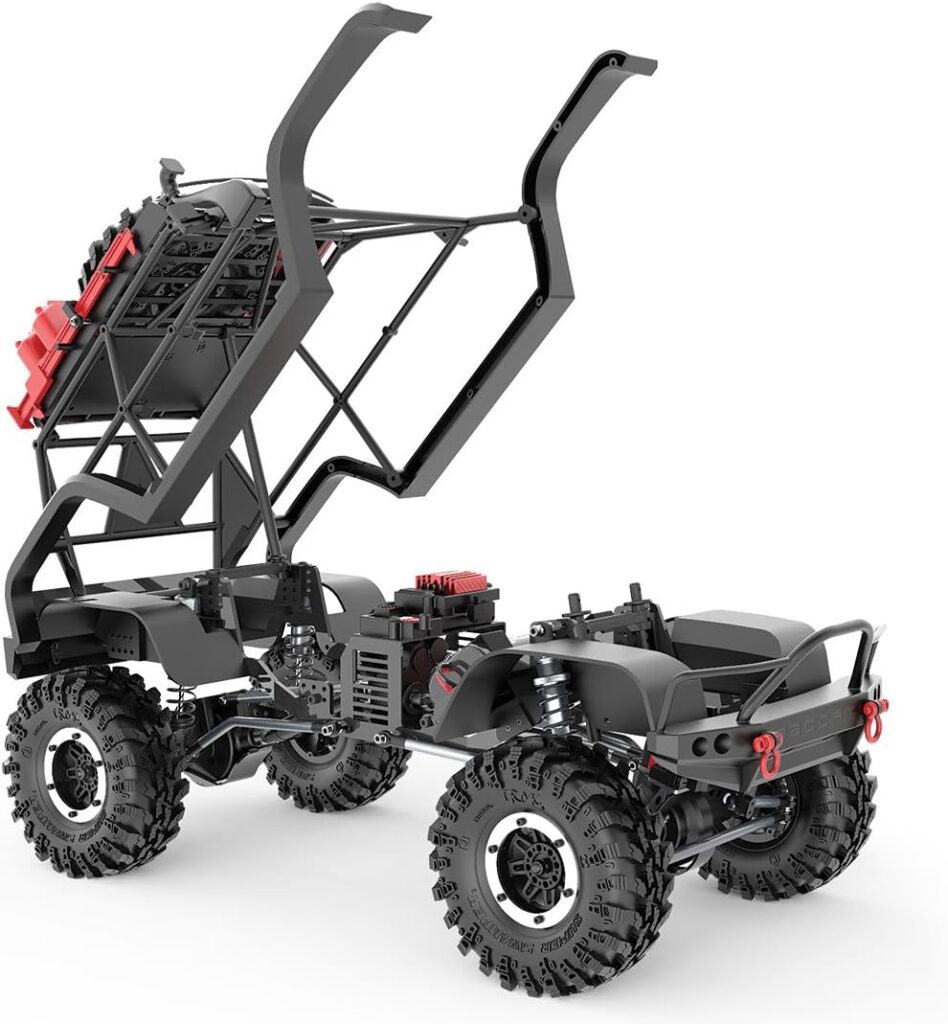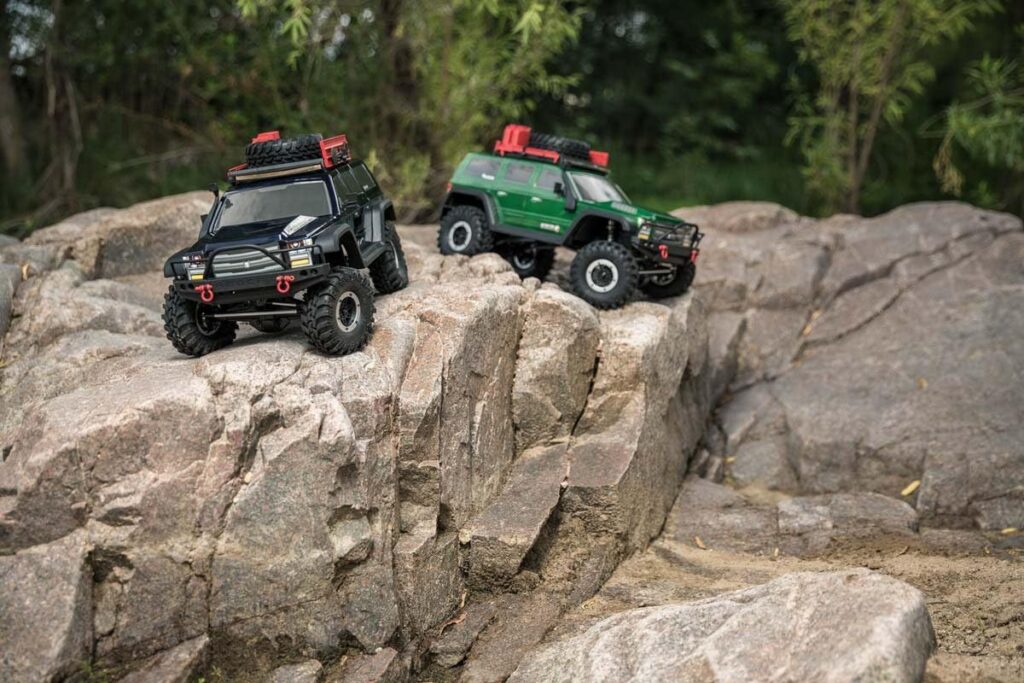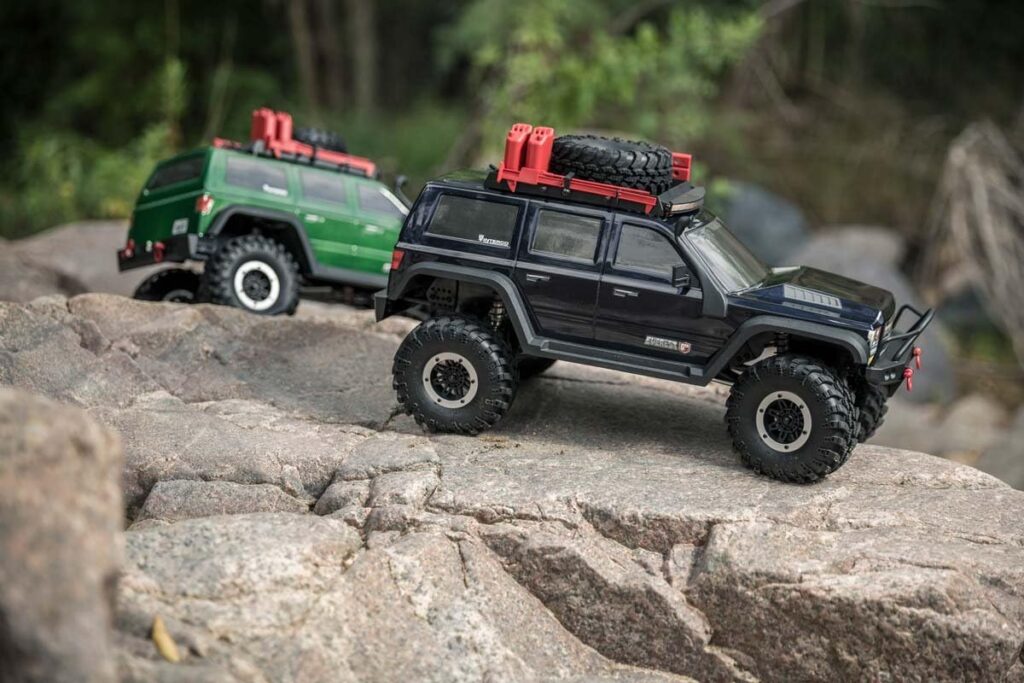Radio controlled (RC) cars are model cars that are steered remotely with a handheld transmitter. These miniature marvels of power and speed have become a popular hobby for racing enthusiasts and backyard bashers alike. This guide will provide an overview of how RC cars work, explaining the components like motors, batteries, chassis, and radio systems that allow these vehicles to zip around at your command. We’ll also explore the various types of RC cars, from scaled-down replicas for racing to towering monster trucks built for stunts. Whether you are new to the hobby or an experienced RC buff, you’ll learn the technology and techniques used to control these exciting electronic creations.
What are RC Cars
RC cars, short for remote controlled cars, are miniature vehicles that are guided by a radio control handset operated by a user. The user can control the direction and speed of the RC car from a distance. RC cars are powered in different ways, such as with electric motors or internal combustion engines, and run on a variety of surfaces. They are used recreationally for racing and stunt driving. RC cars allow drivers to experience high speeds and maneuvers without the dangers of full-sized racing.
History and Development of RC Cars
The first RC cars were powered by combustion engines and emerged in the 1960s as an offshoot of model car racing. These early RC cars, like the model cars used for racing, were made from kits and assembled by hobbyists. In the 1970s, RC cars with electric motors emerged. Breakthroughs in electronic controls and the development of better batteries made electric RC cars increasingly capable and popular. The 1980s and 90s saw advances in the durability and performance of both electric and nitro-powered RC cars. RC car racing became an organized hobby with sanctioned events and enthusiastic spectator audiences. Today’s RC market features mass-produced ready-to-run models along with advanced customizable platforms for hobbyists and racers.
Components of RC Cars

1. Motors and Drivetrain
RC cars are powered by electric motors or internal combustion engines. Electric motors provide instant torque but need heavy battery packs. Gasoline engines offer extended run times in a lightweight package but are messier and require maintenance. The motor connects to the wheels through a drivetrain which typically consists of a gearbox and drive shafts. Gearboxes regulate speed and torque. Some RC cars use a simple single-speed transmission while race cars have multi-speed gearboxes to optimize power delivery.
2. Chassis and Frame
The chassis provides the structural base of the RC car. Materials like aluminum, steel, carbon fiber and plastic are used. The chassis incorporates the main components and shields them from impacts. Racing RC car chassis are lightweight with high structural rigidity. For bashing cars, the chassis absorbs more shock for durability. Suspension parts link to the chassis frame. The shape and size of the chassis varies widely depending on the vehicle type and intended use.
3. Batteries and Remote Controller
Rechargeable battery packs power the electric motors in RC cars. Lithium polymer (LiPo) batteries offer the best combination of energy density, power delivery, and low weight. Gas powered cars use radio control systems too for steering and throttle. The controller has switches and knobs for adjusting controls and displays telemetry data like speed or battery level. Controllers connect to the car wirelessly, up to distances of a kilometer or more.
4. Tires and Suspension System
The tires and suspension allow the RC car to handle various driving conditions. Tire compounds are softer for off-road use to absorb shock and increase grip. Firm rubber tires work best on smooth tracks. Independent suspension allows each wheel to respond individually to bumps and maintain contact with the ground. Suspension tuning is an important part of RC racing to optimize handling and traction.
How to Control an RC Car

1. How the Remote Controller Works
The remote controller uses wireless signals to send control inputs to the receiver in the car. Most RC systems today use proportional controls rather than simple on-off switches. This means the position of the steering wheel or throttle trigger on the transmitter corresponds proportionally to the steering angle or speed of the car. The transmitter encodes the proportional control inputs into data packets that are transmitted to the receiver.
2. Controlling Steering and Speed
Turning the steering wheel left or right signals the front wheels to turn proportionally to the wheel’s position. The throttle trigger controls speed by varying the power sent to the motor. This proportional control allows precise inputs. Steering and throttle can be fine-tuned or maximized as needed for maneuvering at different speeds. Some advanced RC controllers have gyroscopic sensors and assistance systems for stability.
3. Control Systems
Early RC systems were susceptible to interference and had limited range. Modern radio systems use crystal-less 2.4GHz digital technology for excellent response times free of interference. This allows multiple RC models to operate simultaneously at a range of up to a kilometer or more. The system automatically selects open channels and uses error correction for a very low chance of glitching or disconnection. 2.4GHz systems feature high bandwidth for real-time telemetry and proportional control.
Types of RC Cars

1. Chassis Types
RC cars are designed with different chassis types depending on their intended purpose. Off-road chassis are rugged with large shocks and tires for rough terrain. On-road chassis prioritize low weight and stiffness for responsive handling on smooth surfaces. Stadium truck chassis offer a versatile balance for recreational bashing. Competition-level racing chassis focus entirely on optimized aerodynamics and suspension geometry. Monster truck chassis sit atop giant tires for traversing obstacles and rough play.
2. Functional Types
Beyond racing, RC cars are built to perform specialized stunts and tasks. Rock crawlers are tailored for picking their way over rocks with articulated suspensions, low gearing and beadlock wheels. Monster trucks can execute huge jumps using their powerful suspensions. Lowriders can hop and dance using onboard hydraulics. RC construction vehicles like cranes and excavators mimic their full-sized counterparts. Even RC trailers exist for hauling cargo behind an RC car or truck.
3. Power Types
Electric and nitro gas engines both have advantages and downsides. Electric RC cars are faster, cleaner, and easier to use, but gas models have more realistic sound and longer run times. Electric power starts up instantly with fast response. Nitro engines need warming up but sound authentic with their high rpm whine. Some drivers even install small smoke generators on gas RC cars for added realism. A third option is gas power driving an electric generator to charge batteries that run the motors.
Common RC Car Problems and Solutions

1. Battery Issues
Electric RC cars depend on rechargeable battery packs to power their motors. Over time, batteries lose capacity and runtime. Using an underpowered pack leads to sluggish acceleration and early cuts off. Only high quality lithium polymer (LiPo) packs should be used. Battery lifespan can be maximized by proper charging, storage, and avoiding full discharges. Damaged packs that swell or get hot should be discarded and replaced immediately.
2. Signal Issues
Problems with the radio connection between transmitter and receiver can manifest in many ways. Interference, glitching, lag and disconnections mean something is disrupting the signal. Check for sources of radio interference nearby. Make sure direct line of sight is maintained between the antennae. The transmitter and receiver may need to be re-bound to re-establish connection. Range can be improved with higher gain antenna upgrades.
3. Motor Issues
RC car motors take a beating and wear out over time. Sluggish acceleration off the line and lack of top speed indicates a motor on its way out. Commutator motors will need periodic cleaning and brush replacement. Sensorless brushless motors have no serviceable parts—when worn out, the entire motor needs replacement. Swapping in a more powerful motor is a common upgrade but requires matching to the gearing, battery output and speed control.
Frequently Asked Questions about How RC Cars Work
1. How is an RC car controlled?
RC cars are controlled by a handheld transmitter that sends radio signals to a receiver inside the car. The transmitter has controls for steering, throttle, and other functions. The receiver interprets the signals and relays them to servo motors that turn the wheels and adjust the speed. Advanced proportional controls allow for precise inputs.
2. What powers an RC car?
Most RC cars today are powered by rechargeable lithium polymer battery packs that supply electricity to brushed or brushless electric motors. Some use gasoline engines instead for more realistic sound and longer run times. The power system connects to the wheels via a drivetrain made up of gearboxes, drive shafts, and differentials.
3. How does the suspension work?
RC cars have a suspension system similar to real cars, but in miniature. Shocks absorb bumps and keep the tires in contact with the ground. Suspension arms connect the wheels to the chassis and pivot to allow each wheel to move independently. The suspension is tuned with oil, springs, and dampers to optimize handling for different driving conditions.
4. How are RC cars controlled remotely?
The transmitter encodes steering and throttle positions into radio signals using a 2.4GHz radio system. This allows for lag-free, proportional control with minimal interference. The receiver picks up the signals and channels them to the servo motors. The latest radios have ranges up to a kilometer or more.
5. What are the different types of RC cars?
From off-road bashers to high speed on-road racers, there are many types. Stadium trucks offer versatile recreational fun. Monster trucks ride on huge tires for crushing obstacles. Rock crawlers are meant for meticulous technical driving. Touring cars have realistic performance-focused designs. Buggies are fast on- and off-road.
6. How can I make my RC car go faster?
Better batteries provide more power. Brushless motors offer more efficiency and RPMs than brushed. Multi-gear transmission and differential upgrades deliver optimal torque. Bigger tires have higher top speed. Chassis stiffness, weight reduction, and aerodynamics also help. But don’t overdo speed without handling to match.
Final Thoughts
RC cars deliver an exciting driving experience in a small, affordable package. The evolution of motors, batteries, suspension designs, and radio systems has made modern RC cars incredibly capable machines. Hobbyists can choose from a wide selection of vehicles suited for blazing speed, rugged terrain, or spectacular stunts. While mastering an RC car takes practice and skill, these electric and nitro-powered models put real racing thrills at your fingertips. Whether you are a casual enthusiast or devoted racer, RC cars provide an enjoyable taste of life in the fast lane. Continued advancements in technology promise even more versatility and realism in radio controlled models to come.
Enjoyed this guide of How Do RC Cars Work? Then be sure to check out our other guides.